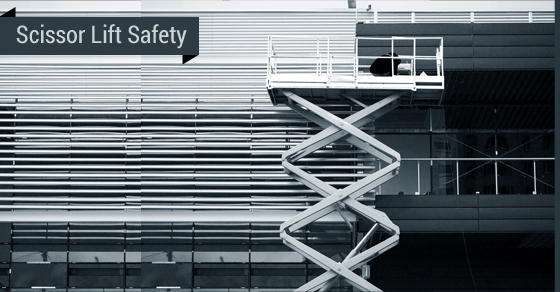Safety is the first priority in using scissor lifts. Every work environment will present its own unique risks, and using large machinery must be carefully considered to prevent undue injury or damage.
The following are four tips to ensure safety on scissor lifts for workers and management.
1. Work Within Guardrails
Scissor lists have guardrails in place to protect workers from falling, but it is also the responsibility of workers to keep themselves within the perimeter of the guardrail as much as possible.
If certain jobs require an individual to reach or move beyond the platform, secondary safety measures should be put in place. Workers must use proper judgment when extending beyond guardrails. If the task can be done more efficiently by raising the platform, then that should be the first option before moving your body.
2. Avoid Overload
Understanding the limits of scissor lifts will ensure maximum safety for workers. Overloading platforms with weight significantly increases the risk of injury as it becomes less stable the higher it goes. Any equipment that extends high above ground level must have a stable base at all times.
Also, rise and lift the platform with care when it is loaded. Fast or sudden movements can put materials, workers, and machinery at risk.
3. Inspect and Maintain
Scissor lifts require regularly scheduled maintenance to keep it working. All repairs need to be applied as soon as possible, and should be done according to the guidelines provided by the manufacturer. It’s essential that you have a checklist in place to ensure that all scissor lifts receive adequate inspection and maintenance.
Develop the habit of inspecting the lift before and after it is used. This is especially important in more extreme work settings that can threaten the integrity of the machinery used.
Make a note of all controls, safety equipment, and other elements of the scissor lift to ensure that they are in good condition.
4. Train Workers
Workers must be fully aware and informed of the proper use and maintenance of scissor lifts for safety. A majority of scissor lift accidents occur as a result of errors in judgment or a lack of awareness of the proper safety procedures.
Training for workers should address manufacturer guidelines, loading capacity, and protocols. In the case of falls, power issue, or other accidents, workers should know what steps to take to reduce the loss of equipment, time, and cost.
These safety tips will ensure that you get the most out of using scissor lifts and optimize the operations of your manufacturing.


